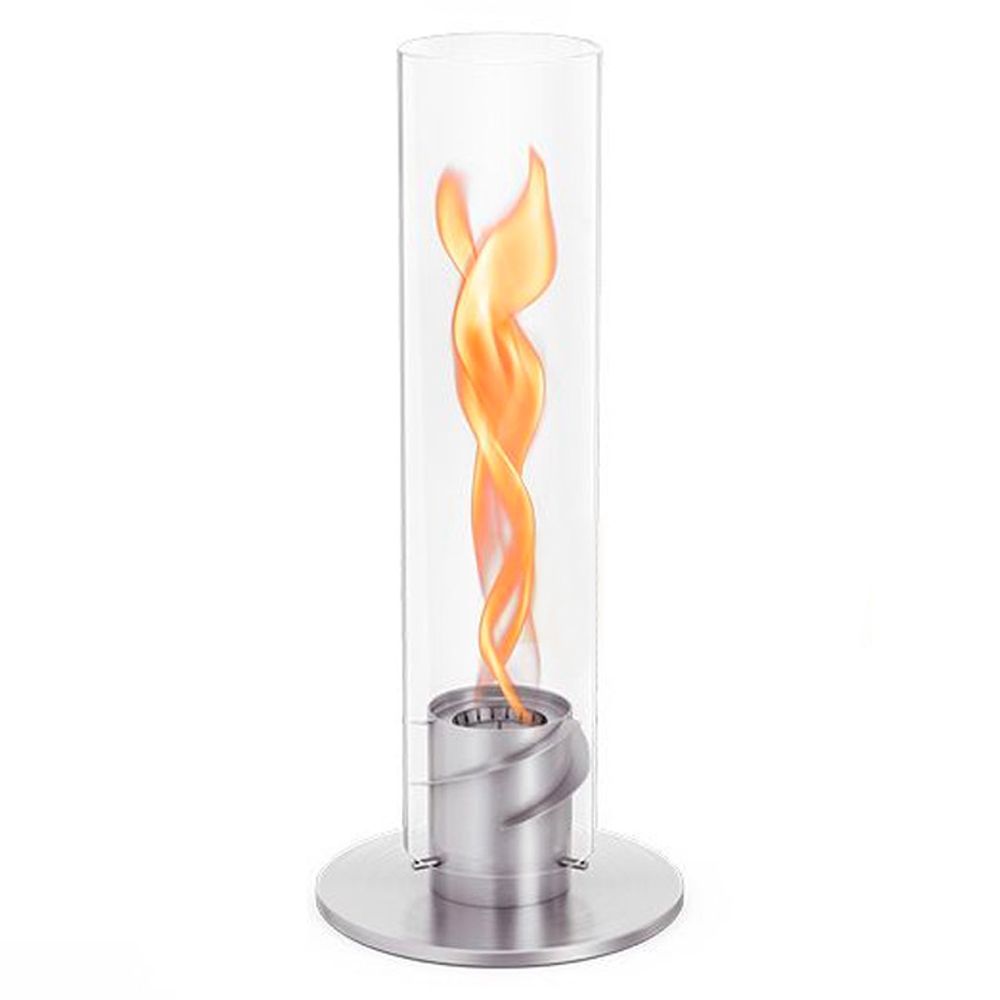Bioethanol fires are generally safe when used correctly, as they produce minimal emissions and do not require a chimney or flue system. However, like any fire source, it is important to follow safety instructions and guidelines to prevent accidents and ensure safe operation.
Bioethanol fires are a popular choice for many homeowners due to their eco-friendly nature and sleek design. These fires are fueled by a renewable energy source, making them an environmentally conscious option for heating and ambiance. Despite their safety features, it is essential to be cautious and responsible when using bioethanol fires to enjoy their benefits without any risks.

Credit: www.luxuryformen.com

The Basics Of Bioethanol Fires
Bioethanol fires are a popular alternative to traditional fireplaces and offer a clean and eco-friendly way to enjoy the warmth and ambiance of a real flame in your living space. Let’s explore the fundamentals of bioethanol fires starting with:
What Are Bioethanol Fires?
- Bioethanol fires are fireplaces that use bioethanol, a renewable and environmentally friendly fuel derived from plants.
- They do not require a chimney or flue, making them versatile for installation in various indoor and outdoor settings.
How Do Bioethanol Fires Work?
- Bioethanol fires operate by burning bioethanol fuel in a reservoir to produce a real flame.
- The fuel is easily ignited with a lighter or match, providing instant heat and visual appeal.
Safety Concerns And Misconceptions
The safety of bioethanol fires is a topic that sparks various concerns and misconceptions among consumers. It’s important to understand the potential dangers and address common misconceptions to separate fact from fiction.
Understanding The Potential Dangers
- Improper installation can lead to fire hazards.
- High temperatures can pose burn risks.
- Using low-quality bioethanol may result in fumes.
- Overfilling the burner can cause flare-ups.
Addressing Common Misconceptions
- Bioethanol fires produce no smoke – True.
- Bioethanol fires do not require ventilation – False.
- Bioethanol is safe for indoor use – True with proper precautions.
- Bioethanol fires are odorless – Depends on the fuel quality.
Factors Contributing To Safety
Bioethanol fires have gained popularity as a sleek and environmentally-friendly choice for adding warmth and ambiance to modern interiors. However, a common concern for many is the safety of bioethanol fires. Understanding the factors contributing to safety is essential for making an informed decision about using these alternative heating sources.
Quality Of Bioethanol Fuel
The quality of bioethanol fuel is a crucial factor in ensuring the safety of bioethanol fires. Utilizing high-quality bioethanol fuel that is specifically formulated for fireplace use decreases the likelihood of combustion issues. Choosing reputable brands with certified bioethanol products can significantly reduce the risk of accidents and ensure a safer burning experience.
Proper Installation And Usage
Proper installation and usage of bioethanol fires are paramount for safety. Following the manufacturer’s instructions and guidelines for installation is crucial to prevent potential hazards. Additionally, understanding the safe operation and maintenance of bioethanol fires is essential. Users should be knowledgeable about factors such as ventilation requirements, refueling procedures, and extinguishing methods to mitigate risks and ensure safe usage.
Comparing Bioethanol Fires To Other Options
When it comes to choosing a fireplace, safety and environmental considerations are key factors. Bioethanol fires have gained popularity as a clean and convenient alternative to traditional fireplaces. Let’s take a closer look at how bioethanol fires compare to other options.
Safety Compared To Traditional Fireplaces
Traditional fireplaces, with their wood-burning or gas-powered systems, have long been associated with safety concerns. Wood-burning fireplaces produce smoke, ash, and sparks, posing a risk of indoor air pollution and potential fire hazards. Gas fireplaces, on the other hand, require careful ventilation and may pose risks if not properly maintained.
In contrast, bioethanol fires offer a safer alternative. They burn clean, producing no smoke, sparks, or harmful gases. Bioethanol, a type of renewable fuel derived from plant sources, is highly flammable but causes no harm if accidentally spilled. Additionally, bioethanol fires eliminate the need for vents or chimneys, reducing the risk of carbon monoxide buildup.
Environmental Considerations
When considering the environmental impact, bioethanol fires prove to be a greener option compared to traditional fireplaces. Here’s why:
- Reduced carbon emissions: Bioethanol is derived from organic materials and burns cleanly without emitting carbon dioxide or other harmful greenhouse gases. This makes bioethanol fires an eco-friendly choice for those concerned about reducing their carbon footprint.
- Renewable and sustainable: Unlike non-renewable fossil fuels used in traditional fireplaces, bioethanol is derived from renewable sources such as agricultural waste or organic crops. This sustainable production process reduces dependence on finite natural resources.
- Minimal waste: Bioethanol fires produce virtually no waste. The fuel is consumed completely during combustion, leaving no residue or ash to clean up. This eliminates the need for disposal and contributes to a cleaner environment.
By comparing bioethanol fires to other options, we can see that they offer a safer and more environmentally conscious approach to home heating and ambiance. If you prioritize safety, sustainability, and convenience, bioethanol fires are certainly worth considering for your fireplace needs.
Taking Precautions And Ensuring Safety
When it comes to enhancing the ambiance and warmth of our living spaces, bioethanol fires have become increasingly popular. However, it’s important to prioritize safety when using these sleek and eco-friendly heating options. By taking the necessary precautions and following responsible usage tips, you can enjoy the cozy atmosphere while keeping any potential risks at bay.
Important Safety Precautions
Before lighting up your bioethanol fire, it’s crucial to be familiar with the necessary safety measures. By adhering to these precautions, you can minimize the chances of accidents or mishaps:
- Ensure proper ventilation: Use your bioethanol fire in a well-ventilated area to prevent the buildup of harmful fumes.
- Keep flammable materials away: Place your bioethanol fire at a safe distance from any flammable elements such as curtains, furniture, or rugs.
- Install smoke and carbon monoxide detectors: Place these detectors in the vicinity of your bioethanol fire to ensure early detection of any potential fire hazards.
- Supervise at all times: Never leave your bioethanol fire unattended. Supervision is essential to prevent accidents and quickly address any issues that may arise.
- Keep a fire extinguisher nearby: Be prepared for emergencies by having a fire extinguisher readily available in case of any unforeseen situations.
- Store fuel safely: Always store bioethanol fuel in a secure location, away from heat sources and out of reach of children or pets.
Tips For Safe And Responsible Use
In addition to the safety precautions mentioned above, here are some practical tips that will help you use your bioethanol fire responsibly:
- Read the manufacturer’s instructions carefully: Familiarize yourself with the specific usage guidelines provided by the manufacturer to ensure proper and safe operation.
- Use high-quality fuel: Opt for high-quality, reputable bioethanol fuel to ensure cleaner burning and minimize any potential risks.
- Keep children and pets away: Make sure to create a safe zone around your bioethanol fire to keep children and pets at a safe distance, reducing the risk of accidents.
- Store a fire blanket nearby: Adding an extra layer of safety, keep a fire blanket within reach to quickly smother any small fires that may occur.
- Regular maintenance and inspections: Perform regular maintenance on your bioethanol fire, including cleaning and inspections, to ensure its continued safe and efficient operation.

Credit: www.facebook.com

Credit: www.amazon.com
Frequently Asked Questions On Are Bioethanol Fires Safe
Are Bioethanol Fires Safe For Indoor Use?
Yes, bioethanol fires are safe for indoor use as they produce no harmful fumes or smoke.
Can Bioethanol Fires Cause Carbon Monoxide Poisoning?
No, bioethanol fires do not produce carbon monoxide, making them safe to use without the risk of poisoning.
Are Bioethanol Fires Environmentally Friendly?
Yes, bioethanol fires are environmentally friendly as they produce clean-burning flames without releasing harmful emissions or toxins.
Do Bioethanol Fires Need A Chimney Or Flue?
No, bioethanol fires do not require a chimney or flue as they do not produce smoke or soot, eliminating the need for ventilation.
Are Bioethanol Fires Easy To Maintain?
Yes, bioethanol fires are easy to maintain as they do not produce ashes or require cleaning of chimneys or flues, saving time and effort.
Conclusion
In sum, bioethanol fires can be safe when used properly. Understanding the potential risks and following safety guidelines is crucial for enjoying these fires responsibly. With proper installation and regular maintenance, bioethanol fires can be a stylish and eco-friendly choice for adding warmth and ambiance to your space.